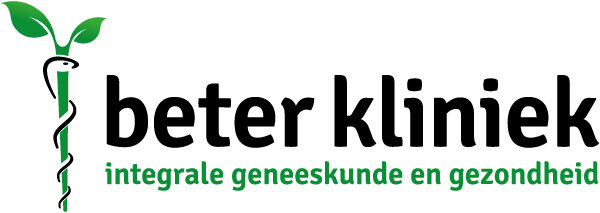Memory problems
Memory is the ability of a human or animal to remember information. It includes three main aspects, namely storage, retention or preservation[1] and retrieval of information. Learning is the process by which new knowledge and skills are stored in the brain. Forgetting is the process by which information is lost in memory. It is a normal process that happens to all people. Dementia is another -pathological- thing, where forgetting takes on excessive forms.
General
A person can remember all kinds of things, not only texts, but also images, colors, sounds and even smells and feelings. To remember something better, a mnemonic is sometimes used. In order not to forget that something still needs to be done, it is sometimes referred to as "putting a knot in the handkerchief," which can also refer to, for example, putting something ready at the front door in the evening so that it is not forgotten to bring the next day. Some impressions are remembered only for a short time, and other impressions for a very long time. Human memory is not perfect and sometimes we think we remember things that did not take place. Through practice, memory can be improved.
Forms of memory
Different forms of memory can be distinguished. Actually, there are two different types of classifications. The first and most familiar classification is based on the aspect of time or duration (sensory, short-term and long-term memory). A second classification is based on the aspect of perception, namely whether memory is explicit (or conscious) or implicit (or unconscious). The sub-forms derived from these two classifications are briefly discussed below.
Sensory memory
Sensory or sensory memory is like an extension of the senses. It is very limited in duration, lasting only a few seconds. Both the conscious mind and the subconscious mind make use of this momentary memory. Similarly, to a greater or lesser extent, people have a certain "alertness," which also occurs consciously and subconsciously. The sounds of the words in a conversation, for example, can be assembled into sequences of sounds, but not yet into words. The auditory variant is called echoic memory (sound track), the visual variant iconic memory (image track).
Short-term memory
Short-term memory is the memory for information remembered at the moment and for a short time. It has a small capacity. A good example is remembering a (not too large) shopping list. Sometimes people also use the term working memory for this. However, working memory is more dynamic and includes, among other things, the ability to apply certain operations to the stored information. It is possible to remember about 7 items in working memory (short-term memory). However, these 7 items are expandable, this is called chunking. For example, it is possible for two items to form a sentence or one can use a mnemonic, such as an acronym (forming a word using the initial letters of the items to be memorized). Thus, it is soon possible to memorize 12 to 13 items in working memory.
Long-term memory
Long-term memory is the memory for information permanently stored in the brain but not always consciously experienced. It has a very large capacity. Knowledge and skills are also included in long-term memory. Here the following three processes are usually distinguished.
- Save
If the information in short-term memory is repeated often enough (or kept long enough), it is transferred to permanent or long-term memory. This process is called consolidation. The form in which this information is stored is also called knowledge or representation.
- Holding
Information or knowledge stored in this way is retained for a very long time. However, memory impressions can fade, making the information more difficult to access. Forgetting is the process by which information in memory is lost, or cannot be retrieved. Also, old knowledge can be "overwritten" by new knowledge. This is called interference. With damage or deterioration of the brain (as in dementia), however, the opposite occurs: recent information is not stored/remembered, while traditionally automated actions and data learned long ago remain available.
- Retrieved from
Knowledge stored in memory must also be retrieved or looked up again (English: retrieval). When retrieving in memory, one can use certain tools or "cues. The existing knowledge is then updated again. We then speak, for example, of recognition or recollection. Tests for memory sometimes yield different results in memory disorders. For example, some patients can remember facts or events using a recognition test (do you recognize this face?), but not using a test in which one has to reproduce knowledge (what is this person's name?). There is also a way to measure implicit memory called priming. This involves responding faster to a word or image if it has been presented beforehand in a certain context. Human memory is not always reliable. Sometimes people think they remember things that never happened.
Long-term memory has the following two sub-forms:
Declarative memory
Knowledge stored in declarative or explicit memory is explicit. That is, we can recall this knowledge (images, facts, a feeling, etc.) in our consciousness. For example, a memory is a thought or image from the past that can be consciously recalled in our memory. Declarative memory also has two sub-forms, namely:
- episodic memory: includes personal events (autobiographical memory).
- semantic memory: contains "meanings" and "facts," e.g., vocabulary, can tell how one fries an egg, what the queen's name is, can tell how to clock, add two numbers together, knowledge of the world, knowledge of language.
Non-declarative memory
Knowledge stored in non-declarative or implicit memory is implicit; that is, we are not aware of the knowledge stored in it. It has the following sub-forms:
- procedural memory: memory for skills such as being able to ride a bike, or being able to read.
- perceptual priming: effects of earlier presentation of, say, a word or figure on subsequent recognition of it or reaction to it. See also priming.
- classical conditioning: learning by association of a conditional and a non-conditional stimulus.
- habituation and sensitization
- memorization through repeated offerings.
It has been shown that separate areas and circuits exist in the brain for the formation of declarative and non-declarative long-term memory.
Emotional memory
It is uncertain whether a separate emotional memory exists, or whether emotions are an aspect of the declarative and non-declarative memory systems discussed above. Conscious memories may also release emotional impressions and experiences, which are apparently part of declarative memory. Possibly, events with an affective (e.g., aversive) charge can modulate or "color" storage in declarative memory via a circuit in the brain that runs from the amygdala to the hippocampus.[2] Emotions appear to contribute to better consolidation (anchoring) of events in long-term memory.[3] Possibly, physiological arousal plays a modulatory role in this process.[4]
However, emotions can also be stored unconsciously in a nondeclarative memory system in the brain. Fear conditioning, for example, involves an interplay between the hippocampus and the amygdala. Learned fear can reinforce an automatic startle response. There is also evidence, for example in the form of the mere-exposure effect, for the existence of a specific form of implicit affective memory separate from declarative (conscious) memory[5][6][7].
Memory disorders
Much of our current knowledge about how memory works is based on research into memory disorders. Broadly speaking, a distinction can be made between disorders of short-term memory (inability to remember recent events) and long-term memory (inability to remember past events). The latter is also known as amnesia. There are different types of amnesia, depending on the nature or location of the disorder in the brain. Sometimes a person has trouble imprinting new information (consolidation), or trouble recalling old information. Progressive memory loss also occurs in normal aging and to a greater extent in diseases of old age such as Alzheimer's disease and Korsakov's syndrome. In healthy older people, short-term memory in particular seems to function less well. However, the long-term memory of (both young and older) healthy people can also let them down temporarily, such as when we cannot come up with a particular word or name, but it is on the tip of our tongue. As we age, it becomes especially more difficult to store new information in episodic memory. Procedural memory remains virtually intact.
Special shapes
Special forms of memory are photographic memory and flash memory. In both forms of memory there would be a kind of photographic image in which all kinds of precise details of an event, text, etc. are recorded. There are also cases of individuals who possessed special memory such as Solomon Shereshevskii. Such individuals are a grateful subject for speculation, myth-making, as well as serious scientific research.
Treatment BeterKlinic
BeterKliniek is the clinic for Integrative Medicine that bridges regular and non-regular medicine.
An van Veen (physician) and Michael van Gils (therapist) look for the cause of a condition or disease. That is where the treatment starts otherwise, as people often say, it is 'carrying water to the sea'. We call this cause medicine. Sometimes it is also desirable to treat the symptoms (at the same time). We call this symptom medicine.
Chronic disorders often have their cause in epi- genetics. You can schedule a free informative telephone consultation (phone number 040-7117337 until 1 p.m.) at BeterKliniek to discuss your symptoms so that we can provide you with further advice.

